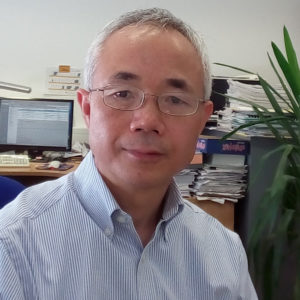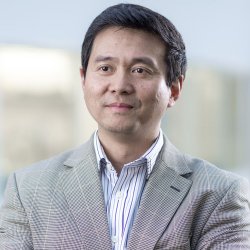T15: Code-Domain NOMA for 5G and Beyond: Principles, Recent Advances and Future Directions
Organizer: Lie-liang Yang, University of Southampton, UK
Organizer: Pei Xiao, University of Surrey, UK
Organizer: Zilong Liu, University of Essex, UK
Abstract: Wireless networks have been rapidly evolving towards providing machine-centric data services. Against an increasingly congested and fragmented spectrum, a major research theme nowadays for 5G and beyond (B5G) networks is how to design efficient multiple access protocols to support explosive growth of communication devices. These devices, widely present in a broad range of vertical industries such as factories of future, intelligent refineries and chemical plants, vehicle-to-everything networks, may be densely deployed in certain area for a highly diverse range of data collection and/or control operations.
This tutorial will provide a systematic introduction on code-domain non-orthogonal multiple access (CD-NOMA) which is a disruptive technique for efficient enabling of massive and ubiquitous connectivity in future machine-type communication networks. The audience will gain insights on basic principles, recent advances, and comparisons of various NOMA schemes as well as their future directions in B5G networks.

Bio: Lie-Liang Yang received his BEng degree in communications engineering from Shanghai TieDao University, Shanghai, China in 1988, and his MEng and PhD degrees in communications and electronics from Northern (Beijing) Jiaotong University, Beijing, China in 1991 and 1997, respectively. He has been with the University of Southampton, UK, since 1997, where he is the professor of Wireless Communications in the School of Electronics and Computer Science. He has research interest in wireless communications, wireless networks and signal processing for wireless communications, as well as molecular communications and nano-networks. He has published over 400 research papers in journals and conference proceedings, authored/co-authored three books and also published several book chapters. The details about his research publications can be found at https://www.ecs.soton.ac.uk/people/llyang. He is a fellow of both the IEEE and the IET, and was a distinguished lecturer of the IEEE VTS. He served as an associate editor to the IEEE Trans. on Vehicular Technology and Journal of Communications and Networks (JCN), and is currently an associate editor to the IEEE Access and a subject editor to the Electronics Letters.

Bio: Prof. Pei Xiao (Senior Member, IEEE) is with the Institute for Communication Systems, Home of 5G/6G Innovation Centre (5GIC/6GIC), University of Surrey. He is the Technical Manager of 5GIC, leading the research team in the new physical layer work area, and coordinating/supervising research activities across all the work areas. Prior to this, he worked at Newcastle University and Queen’s University Belfast. He also held positions at Nokia Networks in Finland. He has published extensively in the fields of communication theory, RF and antenna design, and signal processing for wireless communications. He is an inventor on over ten recent 5GIC patents addressing bottleneck problems in 5G systems.

Bio: Zilong Liu a Lecturer (Assistant Professor) at the School of Computer Science and Electronics Engineering, University of Essex. He received his PhD (2014) from School of Electrical and Electronic Engineering, Nanyang Technological University (NTU, Singapore), Master Degree (2007) in the Department of Electronic Engineering from Tsinghua University (China), and Bachelor Degree (2004) in the School of Electronics and Information Engineering from Huazhong University of Science and Technology (HUST, China). From Jan. 2018 to Nov. 2019, he was a Senior Research Fellow at the Institute for Communication Systems (ICS), Home of the 5G Innovation Centre (5GIC), University of Surrey. Prior to his career in UK, he spent nine and half years in NTU, first as a Research Associate (Jul. 2008 to Oct. 2014) and then a Research Fellow (Nov. 2014 to Dec. 2017). His PhD thesis “Perfectand Quasi- Complementary Sequences”, focusing on fundamental limits, algebraic constructions, and applications of complementary sequences in wireless communications, has settled a few long-standing open problems in the field. His research lies in the interplay of coding, signal processing, and communications, with a major objective of bridging theory and practice as much as possible. He is a Senior Member of IEEE and an Associate Editor of IEEE Wireless Communications Letters, IEEE Access, and Frontiers in Communications and Networks. He is a General Co-Chair of the 10th International Workshop on Signal Design and its Applications in Communications (IWSDA’2022) and a TPC Co-Chair of the 2020 IEEE International Conference on Advanced Networks and Telecommunications Systems (ATTS’2020). Details of his research can be found at: https://sites.google.com/site/zilongliu2357.
